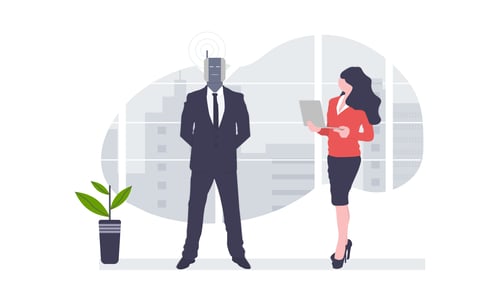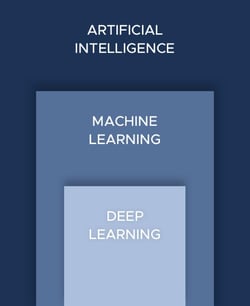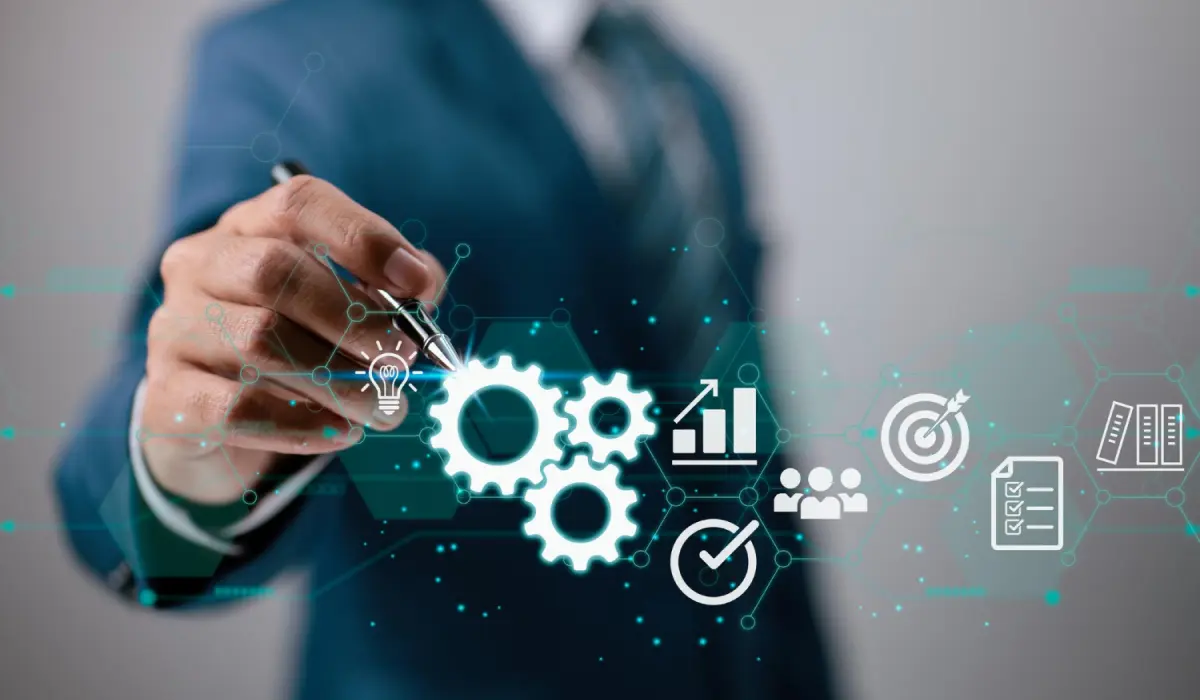Introducing: Artificial intelligence for legal professionals
We can all agree that Artificial intelligence, better known as AI, is one of the most trending topics in 2020. However, due to the complexity of AI and its vastly broad horizon, the technology can be hard to understand. And this false perception of AI has made individuals become skeptical and made those who don’t understand it fearful.
Not only that, but the idea that sci-fi movies have portrayed about AI over the years has majorly confused many of us.
Here is the reality:
The potential of AI is massive and broad towards every industry and sector out there, and it is ultimately there to revolutionize important concepts and solve major problems of our world. We can already see how the use of AI in the legal sector will massively impact the increase of accessibility to justice for citizens and reduce the environmental print of companies by boosting digitalization.
In today’s article, we will provide you with a glimpse of how the use of AI in Bigle Legal is dramatically enhancing the productivity of legal professionals and how the expansion of it can bring a positive impact to the legal tech sector.
Interesting, isn’t it?
Stay with me until the end and we will reveal how AI can benefit the market and you (as a legal professional).
What is AI?
Before we dive into AI, let us have a quick recap into neuroanatomy and how the human brain works; billions of neurons in our brain communicate with each other to shape the way we understand things.
This connected network of information helps us understand certain things better, link together what is related, and with that, perceive and interpret the real world.
Just like the human brain, AI also follows this way of digesting information. AI is a subdomain of Computer Science, dealing with machines/computers to be able to mimic the way our brain works and how we, humans, think, understand and behave.
Distinguishing between Artificial intelligence, Machine learning, and deep learning
The above figure shows AI and its relationship with its two other sub-layers.
Deep learning is the starting point and where the magic happens! It is where we introduce the teaching (resembling how our brain gets introduced to information) process to enable data transfer and communication between the neurons, which is specifically referred to as Neural Networks.
The upper layer, Machine learning, applies these practices and starts to get a more intuitive idea of what this data means by analyzing and learning from vast amounts of data. The more data we expose to it, the better and more accurate the learning process would be.
As an example scenario, we can think of how babies learn to walk for the first time; they try to stand up, fail and fall on the ground and then get up with another attempt. However, they realize that trying in this way hurts them and results in failure. Then, they will start to hold some objects around them to stabilize and get more grip to be able to stand longer and enhance the process for more positive results and eventually start to walk.
At this point, you might be wondering:
What kind of Machine learning algorithms are there and how can we integrate the learning processes exactly?
There are three types of machine learning processes:
1. Supervised learning; is a way of learning through labeled data sets. It means that we have input learning data, we train them over the given data set and labels, and we expect them to learn the way we trained them. If they fail, we can provide more labeled data and train them to improve their outcomes. We can think of this process as a classic teacher-student way of learning however with much more information at a much faster rate.
2. Unsupervised learning; With this process, we do not provide instructions to follow or labeled data sets. The algorithm learns by itself based on the patterns that occur in the given data set. As a simple example, we can classify documents by their topic with unsupervised learning models.
3. Reinforcement learning; is a self-interactor that reacts to the real-world. It means that we always have a start and end goal. However, there could be many ways to reach that goal, depending on which way is the best or optimal solution to go with.
For instance, let’s think about playing chess. While playing chess, we have multiple options to play with each character to finalize the game. But when it comes to the machines, they can think much further than we do, and that is where the algorithm can finalize the game in two moves rather than five moves.
What use do we make of the AI at Bigle Legal?
At Bigle Legal, we work in the growing legal tech industry to provide innovative legal tech solutions to our clients. And because of that, we are thrilled to bring the new AI (Artificial Intelligence) based solution that helps our customers to achieve perfect document automation.
To make this possible, we deep dive into the NLP (Natural Language Processing) field to enhance our existing solutions.
NLP is a sub-field of AI that deals with the interaction between machines and humans by using natural language. The ultimate goal of the NLP is to be able to read, understand and perform decisions regarding the human languages.
The NLP field had great advancements in 2019. Many institutions had shared their most advanced and most comprehensive open-source solutions to help the software communities to build rock-solid applications. Thus, we are expecting that these improvements will continue in 2020 as well. These solutions propelled many companies to develop AI applications for the legal tech industry and enhance already existing legal technologies.
Most of the applications in the market nowadays use pre-trained machine learning models or basic data sets to train their models.
These approaches might be enough for some cases. Yet, as the complexity of the problem grows, more specific data sets and bigger volumes are required for the AI models to learn from. The common problems can be summarized as slow document rendering, non-semantic data structures, human-based errors, unreliable/insecure connections, and manual data labeling.
We have introduced several striking features with our AI-based solutions, to address these issues. We aim to accelerate the document automation process by breaking down each document into small meaningful pieces and analyzing them. Then we create semantic relationships between these parts to help the machines to understand and analyze the context better and faster.
Our customers render hundreds of documents with our efficient legal tech platform every day. Their partnership is vital for us to improve our machine learning models accuracy, as they create more documents, making them as our source of knowledge. Hence, we can create unprecedented machine learning models for each business area by using real-life data sets. This ultimately results in a win-win situation where it drastically improves our client's document processing steps while at the same time, enhancing our technology and advancing our software solutions.
Moreover, we design intelligent agents and cognitive automation processes to decrease human-based errors nearly down to zero. We also reduced processing times even more, down to a few seconds with the help of powerful, self-managed, automated cloud computing tools and Graphics Processing Unit (GPU) rendering technologies.
Hence, these agents have the capability of analyzing thousands of documents to identify entities, classify and create user-friendly output to display the results. They perform most of the tasks by themselves with the lightning-fast speed seamlessly. Our software recognizes the entities, segments the sentences, classifies each document and analyzes the sentiment applied to the content. To ensure the persistence, performance, security, and reliability of these services, we use top tier, trustworthy cloud providers.
As a result of all the efforts put by our highly skilled software engineers, we proudly offer great exclusive services to our clients to help them perfect their document automation processes. With these services, according to our use cases so far, our clients experience an 80% decrease in the tedious parts of their work and allow our clients to focus on adding more value to their businesses.
The document automation with AI brings a series of collateral advantages to society as well. The AI will be proactive in many legal services for planning, service delivery, energy utilization, and resource management to contribute to the Smart Cities Development and European Green Environment vision.
Additionally, we support the growth in the AI field by creating new high-tech jobs in the market. We also try encouraging non-technical legal authorities and students to find their passion in this field and collaborate with us to do better. If you have superior studies in the field of NLP and want to play an important role in crafting the future, contact us!
 By
By





